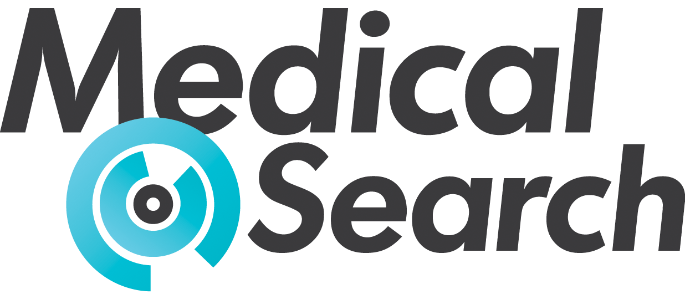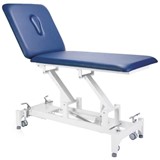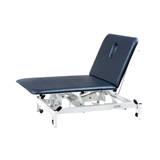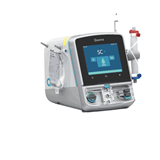Compare lease vs. loan options for salon equipment. Understand costs, tax perks, and ownership benefits to make the right finance choice for your salon
Key takeaways
- Equipment costs: Beauty equipment in Australia ranges from $2,000 to over $50,000, making financing essential for most salons.
- Leasing benefits: Offers low upfront costs, flexibility to upgrade, and often includes maintenance, but no ownership.
- Loan benefits: Leads to ownership, eligibility for depreciation and GST claims, and can build asset value, but typically requires a larger upfront cost.
- Tax treatment: Lease payments are fully deductible; loans allow claims on interest and depreciation.
- Cash flow impact: Leasing generally results in lower monthly payments, while loans can strain cash flow early on.
- Common terms: Both leases and loans offer terms from 1 to 7 years; some lenders offer 24-48 hour approvals under $150,000.
- Key decision factors: Cash flow, how long you plan to use the equipment, tax position, and whether ownership matters to your business.
Introduction
Financing your salon equipment is one of the most important decisions you’ll make as a salon owner. Whether you’re setting up a new location or upgrading to the latest RF or IPL machines, how you choose to finance your gear can impact your cash flow, tax position, and long-term flexibility.
In Australia, beauty salon owners can generally choose between two main financing options: leasing or taking out a loan. This guide breaks down both options in detail—from costs and tax implications to ownership, risk, and flexibility—so you can make a confident, informed decision tailored to your salon’s growth.
Understanding equipment leasing for salons
Leasing involves renting equipment from a lender for an agreed period. You don’t own the equipment but pay a monthly fee to use it.
Types of leases
- Finance lease: You lease the equipment with the option to purchase it at the end.
- Operating lease: You rent the equipment and return it at the end of the term, often with the option to upgrade.
Pros of leasing
- Lower upfront cost: Often requires little or no deposit.
- Predictable payments: Fixed monthly amounts assist with budgeting.
- Tech flexibility: Easily upgrade older or outdated equipment.
- Tax deductible: Lease payments are often fully deductible as business expenses.
- Inclusive servicing: Some lease agreements include maintenance and support.
Cons of leasing
- No asset ownership: You don’t build equity in the equipment.
- Long-term cost: Can cost more than purchasing over time.
- Usage restrictions: Usage caps or return conditions may apply.
Example: Leasing scenario
A Sydney salon leases a $25,000 laser hair removal machine over 3 years. Monthly payments are $850, including maintenance. Total cost over 36 months = $30,600. At the end, they can return or upgrade.
Understanding equipment loans for salons
A salon equipment loan is a type of chattel mortgage where you borrow funds to purchase the equipment outright. The lender holds the asset as security until it’s repaid.
Pros of taking out a loan
- You own the asset: Builds value in your business.
- Tax benefits: Claim GST, interest, and depreciation.
- Flexible usage: No return conditions or usage caps.
- Resale value: Equipment can be resold later.
Cons of taking out a loan
- Higher upfront costs: May require a deposit or full payment upfront before reimbursement.
- Ongoing responsibility: You manage maintenance, insurance, and upkeep.
- Depreciation risk: Value drops over time; you're still paying off the loan.
Example: Loan scenario
A Brisbane salon takes out a $30,000 loan for a body contouring system over 5 years. Monthly repayments are $600. Total repaid = $36,000. At the end, they own the machine.
Comparing lease vs. loan: What matters most
When financing salon equipment, understanding the key differences between leasing and loans can help you make the best choice for your cash flow, ownership goals, and long-term plans.
- Ownership
- Lease: You don’t own the equipment unless you choose to buy it at the end of the term (typically for a residual value or balloon payment).
- Loan: You own the equipment outright from the start, though the lender holds it as security until you repay the loan.
- Upfront costs
- Lease: Usually low or none—ideal if you need to preserve capital during setup.
- Loan: Typically requires a deposit or upfront payment, depending on lender and risk.
- Monthly payments
- Lease: Usually lower and fixed, helping with predictable cash flow.
- Loan: May be higher than lease payments but build equity over time.
- Tax deductions
- Lease: Lease payments are generally fully tax-deductible as operating expenses.
- Loan: You can claim interest on repayments and depreciate the asset over its effective life.
- Maintenance responsibilities
- Lease: Often bundled with service or maintenance plans, reducing admin load.
- Loan: You’re responsible for all upkeep and servicing.
- Flexibility
- Lease: High—easy to upgrade or switch equipment at the end of the lease term.
- Loan: Low—you’re tied to the equipment until you sell or dispose of it.
- Long-term cost
- Lease: Can end up more expensive over time if you continue leasing or opt to buy out.
- Loan: Often cheaper long-term if you plan to keep and fully use the equipment.
Real-world cost comparison examples
Let’s say you're looking to finance a $25,000 IPL machine. Here’s how the costs might compare over a 3-year term:
Option 1: Equipment Loan
- Loan amount: $25,000
- Term: 3 years
- Interest rate: 9.5% p.a.
- Monthly repayments: ~$800
- Total repayments: ~$28,800
- Tax benefit: Claim interest + depreciation (usually ~85% of cost over 3 years)
- End of term: You own the machine outright
Option 2: Equipment Lease
- Monthly lease payment: ~$720
- Term: 3 years
- Total payments: ~$25,920
- Tax benefit: Lease payments are fully deductible
- End of term: Option to purchase (e.g., $2,000 buyout) or return the unit
Outcome: Loans may cost more upfront but give you full ownership, making sense if you plan to use the equipment long-term. Leasing offers a slightly lower cost and more flexibility if you intend to upgrade in 2–3 years.
Cash flow and budgeting impact
When choosing between a lease or loan, understanding how each affects your ongoing cash flow is crucial:
Loans:
- Fixed monthly repayments, but usually higher than lease payments
- Ideal if you have a strong cash position or plan to keep the equipment long-term
- Balloon payments can reduce monthly costs but require a lump sum later
Leases:
- Lower monthly payments, preserving working capital
- Can be structured with seasonal payment options (e.g. slower months)
- Easier to budget with no surprise maintenance costs if bundled
Tip: Use a cash flow forecast to map out repayment impact over time—especially in the first 6–12 months after the purchase.
End-of-term outcomes and exit strategy
It’s easy to focus on the monthly repayments, but smart salon owners always ask: what happens at the end of the finance term?
Loans:
- You own the equipment outright
- You can continue using it with no repayments, resell it, or upgrade privately
- Higher resale value if it’s well-maintained, especially for IPL or RF machines
Leases:
- Options at the end: return, renew lease, or buy out (e.g., 10% residual)
- No equity built up during lease term
- Equipment must often be returned in good working condition
Watch for: Early exit fees, restrictions on upgrades, or return condition clauses.
Financing for specific salon types
Not all salons have the same financing needs. Here’s what to consider depending on your setup:
Laser clinics:
- High upfront costs ($30,000–$80,000 per machine)
- Leasing can help keep up with rapid tech evolution (e.g., diode vs. Nd:YAG)
- Ensure service agreements are included due to complexity of the machines
Hair salons:
- Moderate equipment costs (e.g., $3,000–$15,000 per chair setup)
- Loans are often better for longer-term use items like chairs and basins
- Consider bundling furniture, POS systems, and software into a single loan
Beauty bars/nail salons:
- Lower-cost but more diverse equipment (e.g., LED lamps, autoclaves, trolleys)
- Small loans or leases under $20,000 are usually sufficient
- Fit-out finance is key—custom cabinetry, mirrors, and signage add up fast
Hybrid salons (multi-service):
- Mix of high and low-cost items
- Consider a blended approach: lease advanced machines and loan for fixed assets
Key considerations before choosing
1. Cash flow
- Lease = better for tight or seasonal cash flow.
- Loan = better if you can afford higher payments.
2. Length of use
- Lease if using short-term or expecting upgrades.
- Loan if planning to keep equipment for 5+ years.
3. Tax Strategy
- Leasing may offer simpler, immediate deductions.
- Loans allow long-term asset write-offs and GST refunds.
4. Equipment type
- Lease tech-heavy or fast-depreciating items.
- Buy basics like chairs, furniture, or durable items.
5. End-of-term options
- Lease: return, upgrade, or buy out.
- Loan: full ownership.
Australian finance market insights
- According to IBISWorld, the Australian beauty services market is valued at $7.6 billion (2024).
- Over 68% of salon owners in Australia finance some or all of their equipment.
- Most lenders offer terms of 1 to 7 years, with loan amounts ranging from $5,000 to $500,000.
Tips for choosing the right finance option
- Compare at least 3 lender quotes.
- Ask for a breakdown of fees, including residual or balloon payments.
- Understand whether service and support are included.
- Clarify the tax treatment with your accountant.
- Consider bundling fit-out, software, and furniture for better value.
FAQs: Lease vs. Loan for salon equipment
- Is it cheaper to lease or loan salon equipment?
Leasing usually has lower monthly costs but may cost more overall. Loans can be cheaper long-term if you keep the equipment for several years. - Can I claim tax deductions on both lease and loan?
Yes. Lease payments are typically fully deductible. With a loan, you can claim interest and depreciation. - Can I finance used equipment?
Some lenders allow this, especially under chattel mortgages. Leases are generally limited to new equipment. - What happens at the end of a lease?
You can return, upgrade, or buy the equipment. Terms vary by lease type. - Can I lease-to-own salon equipment?
Yes. Finance leases and some rental agreements allow buyout options at term end. - What’s better for startup salons: lease or loan?
Leasing is often easier for startups due to lower initial costs and less documentation. - How fast can I get approved?
For loans or leases under $150,000, some lenders approve in 24–48 hours with minimal paperwork.
Final thoughts
The choice between leasing and taking out a loan depends on your salon's financial position, growth plans, and how long you plan to keep your equipment. Leasing offers flexibility and lower upfront costs, ideal for fast-changing beauty tech. Loans offer ownership and long-term value, best for salons with stable cash flow and a preference to build assets.
To make the best decision, speak to your accountant, compare lender offers, and weigh the real cost of ownership vs. flexibility. Whether you lease or loan, financing the right way can help you scale your salon sustainably and profitably.













-160x160-state_article-rel-cat.png)














